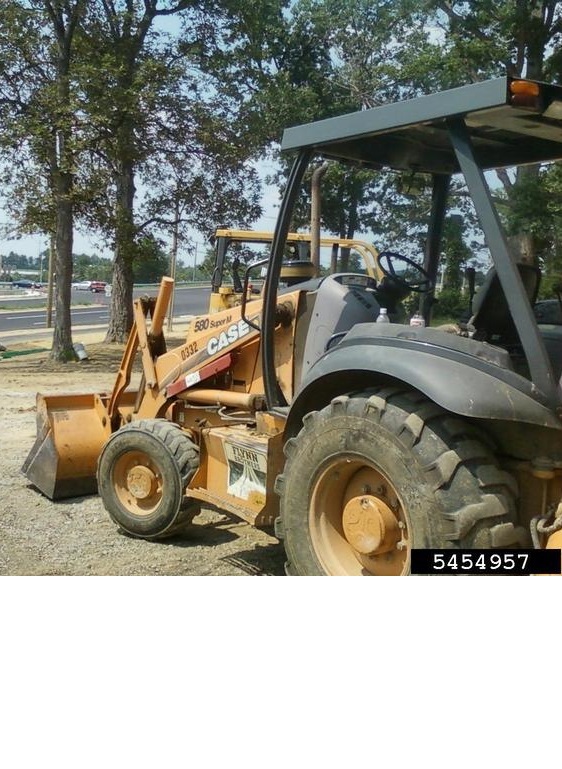 Protecting Trees and Shrubs from Construction Damage October 19, 2016 Jeff Schalau, Agent, Agriculture & Natural Resources University of Arizona Cooperative Extension, Yavapai County Most landscapes face the threat of construction damage at some point. It may be a remodel planned by the homeowner or a road project by local government. In any case, pre-planning can decrease the likelihood of established plant losses during and after construction. Many contractors are focused not on existing tree and shrubs, but on getting the job done as quickly and efficiently as possible. The higher you value existing plants, the more time and energy should be spent on protecting them from damage. Prior to breaking ground or driving heavy equipment over the area, meet with the contractor to walk the site and discuss concerns. If a contract is drawn up, then specify plant protection measures in writing. Some damage may be unavoidable due to restricted access. In many cases this step will help you explore alternatives that could preserve existing trees and shrubs. Native grown trees and shrubs often have not become established with any irrigation. Their root systems can occupy the soil 3 to 5 times the width of the crown. Turf and bare ground areas can also become compacted by heavy vehicles or equipment. Mechanized equipment can also mechanically damage trunks and roots of woody plants. In areas where this is a concern, use temporary construction fences to exclude all access. Many times unknowing workers will unload materials or park vehicles in these locations if not fenced. The purpose of the fence should be clearly communicated to all workers. If damage is unavoidable, consider the effect this will have on the project if that particular tree or shrubs dies. Also consider the option of moving these plants if it is feasible. Smaller trees can be moved more easily than large ones and shrubs can be moved more easily than trees. If a plant must stay in place, water it well before, during, and after the project. Prune out dead branches and fertilize only if nutrient deficiency symptoms are evident. A six-inch layer of wood chips can also protect roots from damage and soil from compaction. Keeping the plant as healthy as possible will increase its chances of survival following disturbance. Concrete and blacktop do not allow adequate oxygen to reach living roots. Brick pavers, gravel, flagstone, and wood chips permit greater gas exchange than do impervious surfaces. If an established tree is to have paving over an area of the root system that was previously unpaved, consider taking measures to irrigate and aerate the area. Some of these measures include placing perforated drainage pipe and gravel under the pavement. Irrigation can also be incorporated into this design. A licensed landscape architect may be able to assist you in the design of these systems. Backfilling established trees above the soil level that nature intended will often kill them. In general, all trees have what foresters and arborists call "butt swell". This widening of the trunk strengthens and supports the tree and canopy. The above ground portion of the tree must also have access to oxygen and is not protected from water and pathogens like the roots. Most trees, especially evergreens, are very sensitive to having the lower portion of the trunk buried. If a finished grade around the base of an established tree must be drastically raised, then try to sculpt the soil surface to accommodate the tree while maintaining the original soil level. Inspect the site often for adherence to rules. Are trees and shrubs healthy? Are workers staying out of temporarily fenced areas? Do you need to irrigate due to lack of precipitation? Even if your trees and shrubs survive the construction phase, they may show construction-related signs of decline one or two years later. To give them the best care, keep them well irrigated and mulched during extended dry periods. If they begin to lose leaves during the growing season, have yellow leaves, a thin crown, or have excessive insect attacks, this could be related to construction damage. If you are not comfortable with these guidelines, consult a certified arborist. They can assist you in making decisions about how your construction plans will affect trees. I have included additional photos and resources below). Follow the Backyard Gardener on Twitter – use the link on the BYG website. If you have other gardening questions, call the Master Gardener help line in the Camp Verde office at 928-554-8992 or e-mail us at verdevalleymg@gmail.com and be sure to include your name, address and phone number. Find past Backyard Gardener columns or provide feedback at the Backyard Gardener web site: http://cals.arizona.edu/yavapai/anr/hort/byg/. Photos   Additional Resources Protecting Trees from Construction Damage: A Homeowner's Guide University of Minnesota Extension www.extension.umn.edu/garden/yard-garden/trees-shrubs/protecting-trees-from-construction-damage/ Preventing Construction Damage to Trees University of Missouri Extension extension.missouri.edu/p/G6885 |